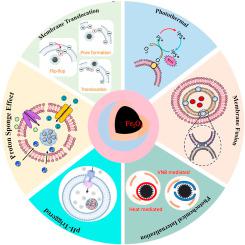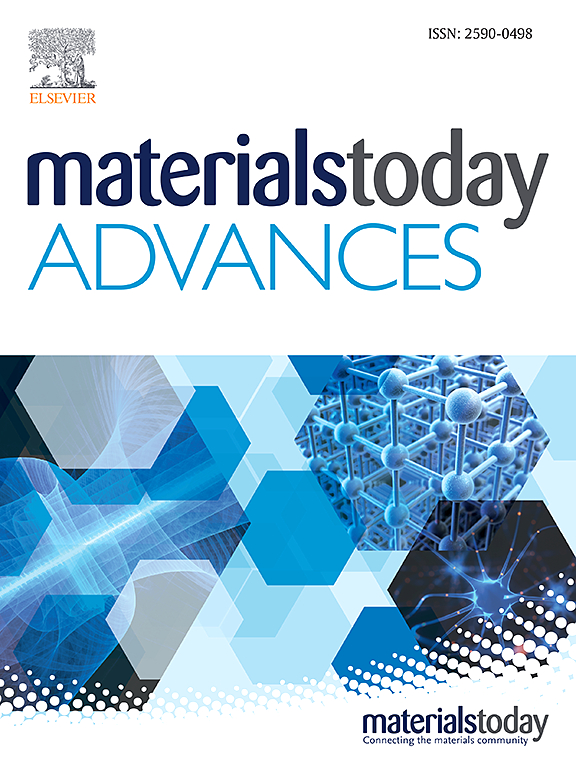磁性纳米结构中的内体逃逸:最新进展与未来展望
IF 8
2区 材料科学
Q1 MATERIALS SCIENCE, MULTIDISCIPLINARY
引用次数: 0
摘要
几种不断发展的疗法都依赖于将治疗药物输送到细胞质中。工程磁性纳米粒子(MNPs)在推动癌症疗法、疫苗接种和基因疗法的发展和现代化方面发挥了关键作用。基于磁性纳米粒子的给药方法的主要优势在于,它们可以通过靶向特定细胞类型来减少副作用,保护脆弱的治疗药物不被早期降解,提高难以给药药物的溶解度,以及长时间持续、精确地释放这些药物。与其他纳米颗粒(NPs)一样,MNPs 通过内吞作用进入细胞,并经常滞留在内吞囊泡中,然后成熟为早期和晚期内体,并在溶酶体中积聚。内吞的 MNPs 最终会在溶酶体中降解或向细胞膜循环。因此,它们必须优先逃离内吞泡。内吞体逃逸对基于纳米粒子的治疗效果非常重要。本综述涉及使用磁性纳米粒子(MNPs)作为功能性纳米物体,通过破坏或破裂内吞泡来提高内吞泡逃逸的治疗效果。本综述讨论了有关磁性纳米粒子高效内泌体逸出的当前策略和未来挑战。本文章由计算机程序翻译,如有差异,请以英文原文为准。

Endosomal escape in magnetic nanostructures: Recent advances and future perspectives
Several evolving therapies depend on the delivery of therapeutic cargo into the cytoplasm. Engineered magnetic nanoparticles (MNPs) have played a pivotal role in advancing and modernizing cancer theranostics, vaccination and gene therapies. The main advantages of MNP-based delivery approaches are due to their potential to decrease the side effects by targeting specific cell types, shielding delicate therapeutics from early degradation, increasing the solubility of hard-to-deliver drugs and long-sustained and precise release of these drugs. Like other nanoparticles (NPs), MNPs enter cells by endocytosis and are frequently stuck inside endocytic vesicles, which mature into early and late endosomes and accumulate in the lysosome. Endocytosed MNPs are ultimately degraded in lysosomes or recycled towards the cell membrane. Thereby, they must escape endocytic vesicles on a priority basis. Endosomal escape is highly important for the effectiveness of nanoparticle-based treatments. This review is concerned with the use of magnetic nanoparticles (MNPs) as functional nano-objects to enhance the therapeutic effects by disrupting or rupturing the endocytic vesicles in terms of endosomal escape. The current strategies and future challenges concerning an efficient endosomal escape of MNPs are discussed in this review.
求助全文
通过发布文献求助,成功后即可免费获取论文全文。
去求助
来源期刊

Materials Today Advances
MATERIALS SCIENCE, MULTIDISCIPLINARY-
CiteScore
14.30
自引率
2.00%
发文量
116
审稿时长
32 days
期刊介绍:
Materials Today Advances is a multi-disciplinary, open access journal that aims to connect different communities within materials science. It covers all aspects of materials science and related disciplines, including fundamental and applied research. The focus is on studies with broad impact that can cross traditional subject boundaries. The journal welcomes the submissions of articles at the forefront of materials science, advancing the field. It is part of the Materials Today family and offers authors rigorous peer review, rapid decisions, and high visibility.
 求助内容:
求助内容: 应助结果提醒方式:
应助结果提醒方式:


